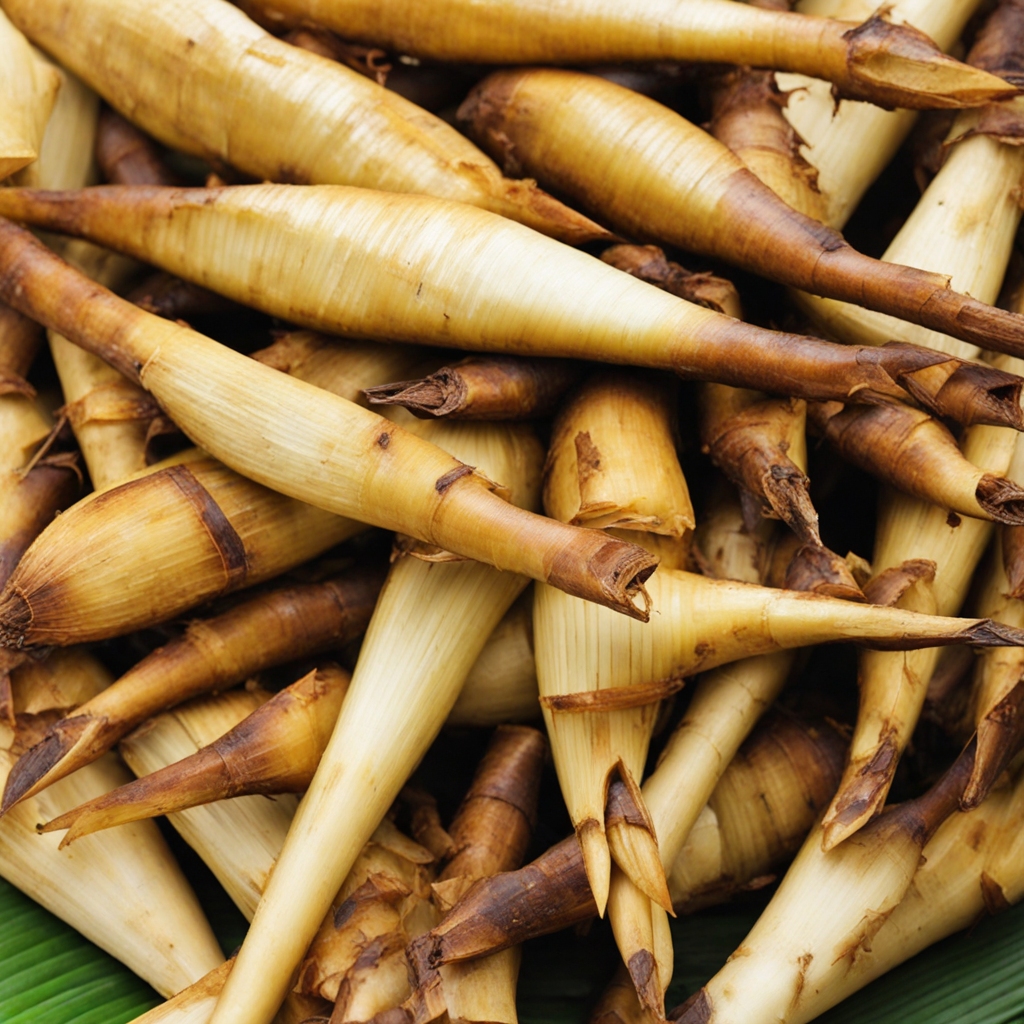Beans and Sweet Potato
Beans and Sweet Potato is a delightful Ugandan dish that showcases the vibrant flavors and textures of its two main ingredients. The beans, often chosen for their creamy texture and earthy flavor, are typically simmered to perfection, allowing them to absorb a medley of spices and seasonings. These legumes are not only nutritious but also provide a hearty base for the dish, making it a filling and satisfying option for any meal. The slow-cooked beans meld beautifully with the sweetness of the potatoes, creating a comforting combination that warms the soul. The sweet potatoes, usually boiled or steamed, add a natural sweetness that contrasts perfectly with the savory beans. Their creamy consistency complements the beans’ texture, creating a harmonious mouthfeel that is hard to resist. Often, the sweet potatoes are left unpeeled, allowing the nutrients locked in their skin to enrich the dish. In Uganda, this dish is typically served with a sprinkle of salt or a drizzle of palm oil, which enhances the earthy flavors and adds a layer of richness that elevates the overall experience. Beans and Sweet Potato is more than just a dish; it reflects the agricultural bounty of Uganda and the culinary traditions that celebrate simple, wholesome ingredients. Enjoyed by families across the country, it is often accompanied by a side of greens or a spicy sauce, adding an extra layer of flavor and nutrition. This dish not only provides a taste of Uganda's rich culinary heritage but also invites diners to appreciate the beauty of combining humble ingredients into something truly special.
How It Became This Dish
Kinyebwa na Lumonde: A Culinary Journey through Uganda #### Introduction Kinyebwa na Lumonde is a traditional Ugandan dish that embodies the rich agricultural heritage and culinary practices of the region. Often enjoyed in the rural areas and during special occasions, this dish combines the wholesome flavors of kinyebwa (sweet potatoes) and lumonde (cassava), showcasing the foodways that have shaped Ugandan identity over centuries. This exploration seeks to unravel the origins, cultural significance, and evolution of Kinyebwa na Lumonde within Ugandan society. #### Historical Context The history of Kinyebwa na Lumonde can be traced back to the pre-colonial era when agriculture was the backbone of Ugandan society. Sweet potatoes and cassava were among the staple crops cultivated by various ethnic groups, including the Baganda, Basoga, Bakiga, and others. These tubers were not just sources of sustenance but also integral to cultural practices and rituals. Sweet potatoes are believed to have been introduced to Africa from South America via the Columbian Exchange in the late 15th century. They quickly adapted to the African climate, especially in Uganda, where they thrived in the fertile volcanic soils. Cassava, on the other hand, was brought from Brazil in the 19th century and became a staple due to its resilience in drought-prone areas. The introduction of these crops significantly influenced local diets, leading to the development of various dishes, including Kinyebwa na Lumonde. #### The Ingredients: A Closer Look At the heart of Kinyebwa na Lumonde are the two primary ingredients: kinyebwa (sweet potatoes) and lumonde (cassava). Both are rich in carbohydrates, making them vital for energy and nourishment. Sweet potatoes (Ipomoea batatas) are not only versatile but also packed with vitamins A and C, fiber, and antioxidants. They come in various colors, ranging from orange to purple, each offering unique flavors and nutritional benefits. Meanwhile, cassava (Manihot esculenta) is valued for its starchy roots, which can be processed into flour, chips, or eaten whole. Cassava is particularly prized for its ability to thrive in poor soils, making it a crucial crop for food security in many parts of Uganda. The preparation of Kinyebwa na Lumonde often involves boiling or steaming the sweet potatoes and cassava until soft. In some variations, local spices and herbs may be added to enhance the flavor, reflecting the diverse culinary traditions across Uganda. #### Cultural Significance Kinyebwa na Lumonde holds a significant place in Ugandan culture, serving not just as a meal but as a means of fostering community and family ties. Traditionally, it is a dish associated with communal gatherings, celebrations, and rituals. In many Ugandan communities, sharing food is an expression of hospitality and kinship, and Kinyebwa na Lumonde is often served during family reunions, weddings, and other significant events. In addition to its communal importance, Kinyebwa na Lumonde is also tied to the agricultural calendar. The harvest season, particularly in the months of March to May, is a time of abundance when families come together to celebrate their yields. The dish symbolizes gratitude for the land's bounty and serves as a reminder of the hard work that goes into cultivation. #### Development Over Time The evolution of Kinyebwa na Lumonde reflects broader social and economic changes in Uganda. During the colonial period, the introduction of cash crops like coffee and tea shifted agricultural priorities, leading some farmers to abandon traditional staples. However, the resilience of local food systems ensured that traditional dishes, including Kinyebwa na Lumonde, remained integral to Ugandan cuisine. In recent decades, globalization and urbanization have further influenced the way Kinyebwa na Lumonde is prepared and consumed. As more people migrate to urban centers for work, the availability of these ingredients has been affected. However, the dish has adapted; many urban dwellers seek to maintain their culinary heritage by preparing Kinyebwa na Lumonde at home or in local restaurants. Moreover, the rise of interest in health and nutrition has led to a renewed appreciation for traditional foods like Kinyebwa na Lumonde. As people become more health-conscious, the nutritional benefits of sweet potatoes and cassava are increasingly recognized. This shift has contributed to a resurgence of interest in traditional Ugandan cuisine, with Kinyebwa na Lumonde at the forefront. #### Contemporary Relevance Today, Kinyebwa na Lumonde is celebrated not only as a traditional dish but also as a symbol of Ugandan identity. It is featured in various culinary festivals and cultural events, where chefs and home cooks alike showcase their unique takes on the dish. The emphasis on local ingredients and traditional preparation methods appeals to a growing desire for sustainability and authenticity in food. Furthermore, Kinyebwa na Lumonde has found its way into international gastronomy, with chefs experimenting with its components in contemporary dishes. This fusion reflects the dynamic nature of Ugandan cuisine, where traditional flavors meet modern culinary techniques, making it relevant to a global audience. #### Conclusion Kinyebwa na Lumonde is more than just a dish; it is a reflection of Uganda's agricultural history, cultural values, and evolving food landscape. From its origins in pre-colonial agricultural practices to its contemporary significance in urban settings, Kinyebwa na Lumonde encapsulates the essence of Ugandan identity. As the world becomes more interconnected, the appreciation for such traditional dishes fosters a deeper understanding of cultural diversity and culinary heritage. Whether enjoyed at a family gathering or in a bustling city restaurant, Kinyebwa na Lumonde continues to nourish both body and spirit, bridging generations through its rich flavors and cultural significance.
You may like
Discover local flavors from Uganda







